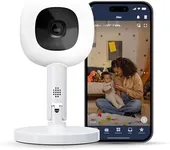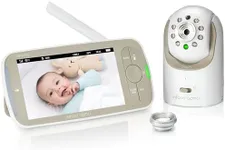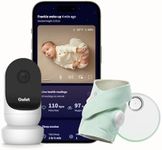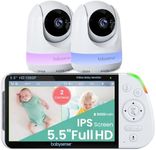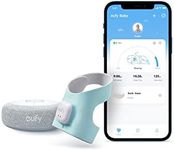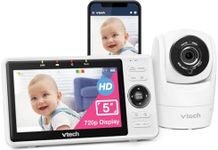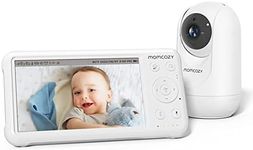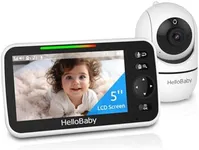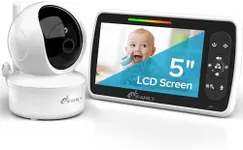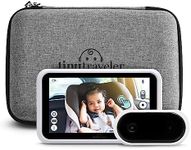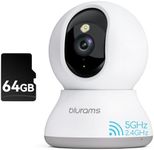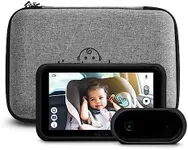Buying Guide for the Best Portable Baby Monitors
Choosing the right portable baby monitor can be a daunting task, but it's essential for ensuring your baby's safety and your peace of mind. A baby monitor allows you to keep an eye (or ear) on your little one while they sleep or play in another room. When selecting a baby monitor, consider the features that will best suit your needs and lifestyle. Here are some key specifications to look out for and how to determine which ones are right for you.RangeThe range of a baby monitor refers to the maximum distance it can effectively transmit audio and/or video signals between the baby unit and the parent unit. This is important because it determines how far you can be from your baby while still being able to monitor them. If you live in a small apartment, a shorter range may suffice. However, if you have a larger home or plan to use the monitor outside, such as in the garden, you'll need a monitor with a longer range. Typically, ranges can vary from 300 feet to over 1000 feet. Assess your living space and choose a monitor with a range that covers all the areas where you might need to monitor your baby.
Audio vs. VideoBaby monitors come in two main types: audio-only and audio-video. Audio monitors allow you to hear your baby, while video monitors let you see and hear them. Audio monitors are generally simpler and more affordable, making them a good choice if you only need to be alerted to your baby's cries. Video monitors provide an added layer of reassurance by allowing you to visually check on your baby without entering the room, which can be especially useful for monitoring sleep patterns or ensuring your baby is safe. Consider whether you need the visual component or if audio alone will meet your needs.
Battery LifeBattery life is crucial for portable baby monitors, especially if you plan to move around the house or take the monitor with you on outings. A longer battery life means less frequent recharging and more reliable monitoring. Battery life can range from a few hours to over 20 hours on a single charge. If you need a monitor for overnight use or extended periods, look for one with a longer battery life. Additionally, consider whether the monitor has a low-battery alert to ensure you’re never caught off guard.
Night VisionNight vision is a feature in video baby monitors that allows you to see your baby clearly in low-light or dark conditions. This is important for monitoring your baby during naps or nighttime without having to turn on lights that might disturb their sleep. Night vision quality can vary, with some monitors offering clearer images than others. If you plan to use the monitor primarily at night, ensure it has good night vision capabilities. Look for monitors that provide clear, grayscale images in the dark.
Two-Way CommunicationTwo-way communication, or talk-back feature, allows you to speak to your baby through the monitor. This can be useful for soothing your baby from another room or giving instructions to a caregiver. It can also be a comforting feature for older babies and toddlers who may respond to your voice. If you think you’ll benefit from being able to talk to your baby without being in the same room, look for a monitor with this feature.
PortabilityPortability refers to how easy it is to move the baby monitor around. This includes the size and weight of the parent unit, as well as whether it has a clip or strap for easy carrying. A portable monitor is ideal if you need to move around the house or take the monitor with you when traveling. Look for a compact, lightweight design that fits comfortably in your hand or pocket. Additionally, consider whether the monitor has a rechargeable battery or can be powered by standard batteries for added convenience.
Additional FeaturesSome baby monitors come with additional features such as temperature sensors, lullabies, and motion detection. Temperature sensors can alert you if the room becomes too hot or cold, ensuring a comfortable environment for your baby. Lullabies can help soothe your baby to sleep, and motion detection can alert you to any movement in the crib. While these features are not essential, they can provide added convenience and peace of mind. Consider which, if any, of these extra features would be beneficial for your specific needs.
